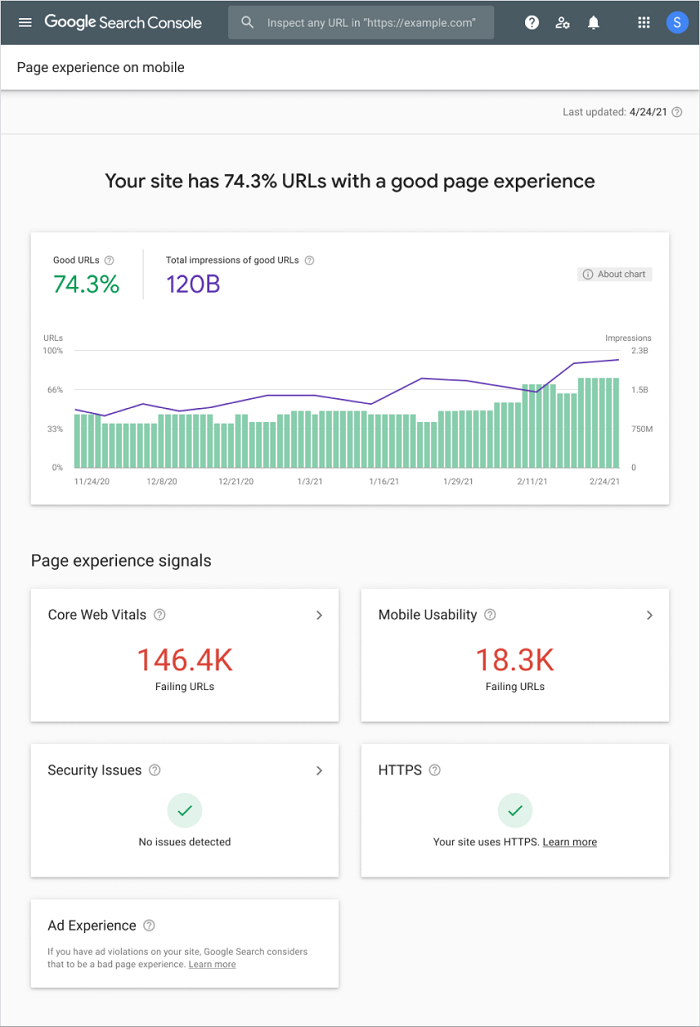SOCIAL
Google Adds New ‘Page Experience’ Report to Help Site Owners Prepare for Algorithm Update

As Google prepares to roll out its new ‘Page Experience’ search algorithm update, which will incorporate its three Core Web Vitals considerations, it’s shared some new details on the timeline for the roll-out, and a new tool to help website owners prepare for any potential impacts to their rankings.
As explained by Google:
“We’ll begin using page experience as part of our ranking systems beginning in mid-June 2021. However, page experience won’t play its full role as part of those systems until the end of August. You can think of it as if you’re adding a flavoring to a food you’re preparing. Rather than add the flavor all at once into the mix, we’ll be slowly adding it all over this time period.”
Seems like a fairly flat analogy – but then again, Google’s announcements are not known for their creative flair or engagement.
As noted, the Page Experience update will see Google’s Core Web Vitals become more influential elements in search ranking.
The three ‘vitals’ are:
- Largest Contentful Paint (LCP) – This element measures loading performance and how fast the key visual elements of your pages become available for the user after clicking through. Google says that in order to provide a good user experience, sites should strive to have LCP occur within the first 2.5 seconds of the page starting to load.
- First Input Delay (FID) – Similar to LCP, FID measures how long it takes for your page to become interactive, so users can click and search. Google says that websites should strive to have an FID of less than 100 milliseconds.
- Cumulative Layout Shift (CLS) – This element measures visual stability. For example, have you ever gone to tap on something on a page and then it’s suddenly moved or shifted as you’ve done so, and you’ve accidentally clicked on something else, taking you to the wrong destination? That’s what this looks to measure, with poor stability leading to lower ranking.
So, you should be looking to improve your visual load times, improve load time overall and ensure your buttons are stable.
At the same time, Google does also note that these elements are not new, and are already factored into its search algorithm.
“While this update is designed to highlight pages that offer great user experiences, page experience remains one of many factors our systems take into account. Given this, sites generally should not expect drastic changes. In addition, because we’re doing this as a gradual rollout, we will be able to monitor for any unexpected or unintended issues.”
So if your website or pages are already stumbling on these elements, they’re likely already being impacted in search rankings as a result, and probably won’t be significantly more penalized once the new update is in effect.
Probably. As with past algorithm updates, the impacts can sometimes be more significant than expected, because Google can’t be 100% sure of the full effects until they’ve been released.
To help website owners prepare for the update, Google has also launched a new Page Experience report, which combines its existing Core Web Vitals report with a range of additional elements (like HTTPS security, absence of intrusive interstitials, etc.) in order to outline potential areas to be addressed.

As per Google:
“The Page Experience report offers valuable metrics, such as the percentage of URLs with good page experience and search impressions over time, enabling you to quickly evaluate performance. You can also dig into the components of page experience signal to gain additional insights on opportunities for improvement.”
That will help guide website managers on what they need to improve on, while Google’s also updated its Search Performance report which will now enable site owners to filter out specific pages with good page experience, in order to provide comparative context against other pages for your reference.
Are your Google search rankings going to tank from mid-June? As Google notes, probably not, but if they do, it may well be worth checking your site against these metrics – while if you can, it would be beneficial to proactively run your site through these reporting tools to get an idea on possible areas of concern.
Such efforts can take time, and it can be easy to dismiss these updates when Google says ‘it’s all good, there’ll be no real change’. But a great many websites and businesses are reliant on Google traffic, and as such, setting aside the time to at least get an idea of any errors could end up being a beneficial step.
